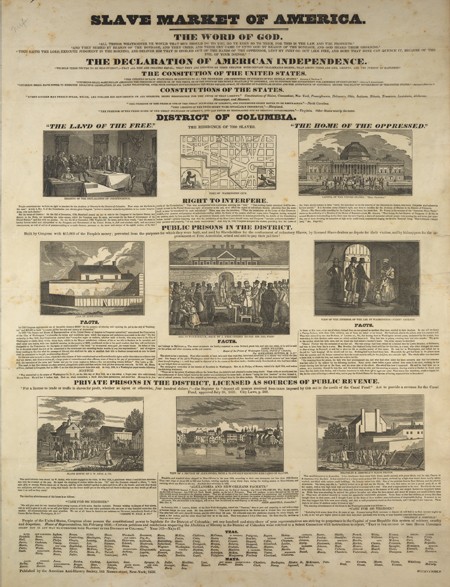The decades between the American Revolution and the Civil War form a critical moment during which American civic architecture developed its particular stylistic character and symbolic significance. It was also in this period that notions of citizenship and the formation of the racial paradigm of human difference merged with myths of a bountiful continent that would nurture an American civilization, whose cultural values its new civic architecture was designed to symbolize. Drawn from centuries of European colonial encounters with peoples in the New World, Asia, and Africa, formulations in Enlightenment philosophy debated why and how these regions had evolved different characteristics of “race.” In the United States, physical attributes of race linked to capacity for reason influenced social perceptions and legal definitions that determined who enjoyed the rights and privileges of freedom and who was destined to toil enslaved in perpetuity. Paradoxically, enslaved blacks, defined solely as “property” lacking the faculties to be self-aware and self-possessed, built a significant number of the civic buildings designed by the nation’s first architects: Thomas Jefferson (1743–1826), Benjamin Henry Latrobe (1764–1820), and William Thornton (1759–1828). How race informed the discourses on slavery, nationalism, aesthetics, and architecture during this formative period is the core thesis of “Building Race and Nation: How Slavery Influenced Early American Civic Architecture,” the book that I have been writing during my fellowship at CASVA. Discussions throughout the year with my colleagues proved invaluable for shaping my central argument.
For my
While at CASVA, I dedicated significant time to research in local archives, with trips to Richmond and Philadelphia to collect archival materials for the book’s five chapters, which I plan to complete over the next two years. One important study charts the development of Washington, DC, its territory formed from land in Maryland and Virginia through the compromise of the congressional Residence Act (1790), which ended a stalemate between the southern and northern states. This decision resulted in the migration of the new capital from the temporary meeting place of Philadelphia, a hotbed of abolitionist activity, southward to the slaveholding Chesapeake region. In combing through the National Archives’ records of the original three-man commission set up in 1791 to oversee the development of the federal district and its government buildings, I was able to document how enslaved labor was used in all phases of construction. Under
The remaining chapters explore how African Americans found spaces of refuge and resistance in Washington and how the abolitionist and colonization movements that emerged in the 1820s took different positions as to whether blacks should reside after emancipation in the United States or elsewhere. The book’s final chapter considers how racialized representations of national identity changed with the emergence of scientific theories of
